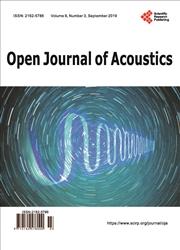CFD Simulation of Air Flow Behaviour at Different Flow Rates in a Turkish Woodwind Instrument (Turkish Treble Recorder)
引用次数: 1
Abstract
In musical instruments, the geometric design and material features of the instrument are the most important factors that determine the sound characteristics of the instrument. Traditional replication and experiment-based handcrafting methods are predominant in the production of Turkish Folk Music wind instruments. The instrument manufacturing and standardization approaches, which include the relevant rules of physics and engineering practices, are limited purely to prototype studies for scientific research purposes. It is almost impossible to find studies on Turkish Folk Music wind instrument design and production involving computer aided design and engineering applications. In this study, an example Turkish woodwind instrument, the Turkish Treble Recorder (dilli kaval) is considered, and the air flow behaviour and acoustic (sound) power magnitudes that occur at different air flow rates are simulated in a computer environment using a Computational Fluid Dynamics (CFD) simulation technique. In the study, numerical and visual outputs related to air behaviour at different air flow rates that may be used in the instrument manufacturing phases were obtained. Acoustic power level was also measured experimentally. Simulation outputs (the acoustic power level) were compared to experimental results in order to validate the simulation results. The comparison revealed that the highest relative difference was calculated as 13.32(%). This value indicated that the simulation results were reasonably consistent with the results of the experimental measurement. Additionally, this study was constructed as a case study that may provide reference for future research studies in this field.土耳其木管乐器(土耳其高音记录器)不同流速下气流特性的CFD模拟
在乐器中,乐器的几何设计和材料特征是决定乐器声音特征的最重要因素。传统的复制和基于实验的手工制作方法在土耳其民间音乐管乐器的生产中占主导地位。仪器制造和标准化方法,包括物理和工程实践的相关规则,仅限于用于科学研究目的的原型研究。几乎不可能找到涉及计算机辅助设计和工程应用的土耳其民间音乐管乐器设计和生产研究。在本研究中,考虑了一个示例土耳其木管乐器,土耳其高音记录器(dilli kaval),并使用计算流体动力学(CFD)模拟技术在计算机环境中模拟了在不同空气流速下发生的气流行为和声(声)功率大小。在这项研究中,获得了与不同空气流速下的空气行为相关的数字和视觉输出,这些输出可用于仪器制造阶段。还通过实验测量了声功率水平。将模拟输出(声功率水平)与实验结果进行比较,以验证模拟结果。比较表明,计算出的最高相对差异为13.32(%)。该值表明模拟结果与实验测量结果合理一致。此外,本研究被构建为一个案例研究,可以为该领域未来的研究提供参考。
本文章由计算机程序翻译,如有差异,请以英文原文为准。
求助全文
约1分钟内获得全文
求助全文

 求助内容:
求助内容: 应助结果提醒方式:
应助结果提醒方式:


